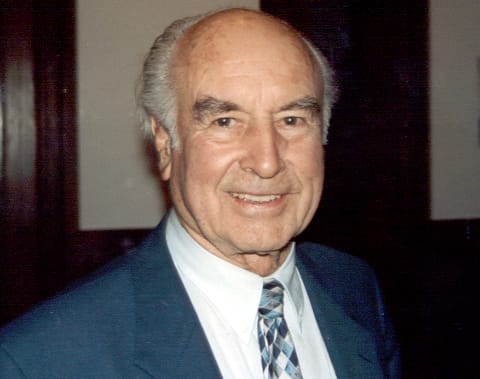Student Unearths Elusive Fungus That Captivated LSD's Creator for Decades
A college student's keen observation during a routine field trip has led to the discovery of a mysterious fungus that had eluded scientists for over 80 years—one that particularly fascinated Albert Hofmann, the Swiss chemist who first synthesized LSD.
The breakthrough came when University of California undergraduate Maya Chen noticed unusual blue-staining mushrooms growing on decaying oak logs in the Santa Cruz Mountains. What initially appeared to be a simple class assignment for her mycology course has now solved one of the most enduring puzzles in fungal taxonomy.
The Mystery That Puzzled a Pioneer

Albert Hofmann, best known for his accidental discovery of LSD's psychoactive properties in 1943, spent considerable time studying various fungi species throughout his career. In his extensive research notes, Hofmann repeatedly referenced encountering a peculiar blue-staining fungus during his travels through California in the 1960s, describing it as having "remarkable alkaloid potential" and "unique morphological characteristics."
Despite collecting specimens and conducting preliminary analyses, Hofmann was never able to definitively classify the species before his death in 2008. The fungus became something of a holy grail among mycologists, with several research expeditions launched over the decades to locate and identify it.
A Student's Sharp Eye Changes Everything
Chen's discovery occurred during a routine biodiversity survey led by Professor Dr. James Martinez of UC Santa Cruz's Environmental Studies department. While her classmates focused on more obvious specimens, Chen was drawn to small, seemingly unremarkable mushrooms exhibiting an intense blue bruising reaction when touched.
"Most students would have walked right past them," explains Dr. Martinez. "But Maya has this incredible attention to detail. She noticed the blue staining was unlike anything we typically see in our local species."
The specimens were initially processed as part of a standard class collection, but Chen's detailed field notes and photographs caught the attention of visiting researcher Dr. Sarah Wong from the California Academy of Sciences, who recognized the potential significance.
Scientific Breakthrough Through DNA Analysis
Advanced genetic sequencing at the Academy's research facilities confirmed what many had suspected—this was indeed the elusive species that had captivated Hofmann. The fungus, now officially classified as Psilocybe hofmannii in honor of the late chemist, represents an entirely new species within the psilocybe genus.
"The DNA analysis revealed unique genetic markers that distinguish it from all known psilocybe species," explains Dr. Wong. "The alkaloid profile is particularly interesting, showing compounds we haven't seen in other members of this genus."
Initial chemical analysis suggests the fungus contains novel psychoactive compounds different from the psilocybin found in other "magic mushrooms," though researchers emphasize that extensive study is needed to understand their properties and potential applications.
Implications for Modern Research
The discovery comes at a crucial time for psychedelic research, as institutions worldwide investigate the therapeutic potential of naturally occurring psychoactive compounds. Studies at Johns Hopkins, Imperial College London, and other leading universities have shown promising results using psilocybin to treat depression, PTSD, and addiction.
Dr. Robin Carhart-Harris, head of the Centre for Psychedelic Research at Imperial College London, calls the discovery "potentially groundbreaking" for understanding the full spectrum of psychoactive fungi. "Each new species offers unique chemical profiles that could lead to novel therapeutic applications," he notes.
The finding also highlights the importance of citizen science and undergraduate research participation. Chen's discovery demonstrates how fresh perspectives and careful observation can lead to significant scientific breakthroughs.
Looking Forward: Conservation and Study
The research team is now working to establish the fungus's full geographic range and ecological requirements. Early surveys suggest Psilocybe hofmannii may be endemic to specific coastal California ecosystems, raising immediate conservation concerns.
"We need to understand its habitat requirements and population size before this species faces any threats from over-collection or environmental changes," warns Dr. Martinez.
Plans are underway for comprehensive studies of the fungus's chemical properties, ecological role, and potential applications, with Chen continuing her involvement as a paid research assistant.
The Power of Curiosity
Chen's discovery serves as a powerful reminder that scientific breakthroughs can come from unexpected places. Her careful observation during a routine field exercise has not only solved an 80-year-old mystery but potentially opened new avenues for psychedelic research and our understanding of fungal biodiversity.
As research into Psilocybe hofmannii continues, the scientific community celebrates both the resolution of Hofmann's long-standing puzzle and the promise this discovery holds for future therapeutic applications.
SEO Excerpt: College student Maya Chen's field trip discovery solves 80-year mystery fungus that fascinated LSD inventor Albert Hofmann, potentially opening new psychedelic research avenues.
SEO Tags: psychedelic research, mycology, Albert Hofmann, LSD, psilocybe, student discovery, fungus identification, UC Santa Cruz, scientific breakthrough, natural compounds
Suggested Illustrations:
- Hero Image (Top of post): Split composition showing Maya Chen examining mushrooms in forest setting alongside historical photo of Albert Hofmann in his laboratory
- Placement: Featured image
- Generation prompt: "Young female college student in field gear examining blue-staining mushrooms in California forest, natural lighting, documentary photography style"
- Comparison Chart (After "Scientific Breakthrough" section): Infographic comparing Psilocybe hofmannii characteristics with other known psilocybe species
- Placement: Mid-article
- Generation prompt: "Clean scientific infographic showing mushroom identification chart with morphological differences, blue color scheme, academic style"
- Research Laboratory Photo (After "Implications" section): Modern mycology lab with DNA sequencing equipment and fungal specimens
- Placement: Lower third of article
- Generation prompt: "Modern scientific laboratory with microscopes, DNA sequencing equipment, and preserved fungal specimens in sterile containers, professional lighting"
Target Audience: Science enthusiasts aged 25-45, students and academics in mycology/biology, psychedelic research community, nature conservation advocates
